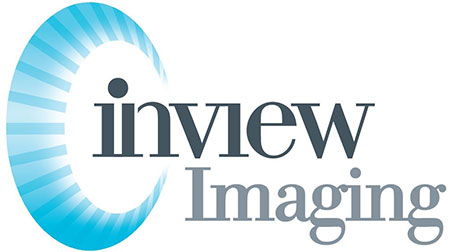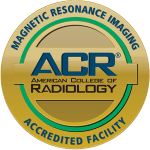InView Imaging: The Bay Area’s Top Ultrasound Provider
Ultrasound imaging is a safe, non-invasive diagnostic tool that uses sound waves to create detailed images of the inside of your body. It’s commonly used to monitor pregnancies, diagnose conditions in organs like the liver and kidneys, and assess blood flow through arteries and veins. At InView Imaging, we understand the importance of accurate and timely diagnoses, and we are committed to providing the highest quality care for all your ultrasound needs. With over 50 years of experience serving the San Francisco Bay Area, our community-based radiology practice is dedicated to meeting the unique needs of our patients and their families. Our state-of-the-art technology ensures precise and reliable results, while our skilled radiologists and compassionate staff make your comfort and safety their top priority. We are proud to offer ultrasound services at all our convenient locations in Antioch, Oakland, Fremont, San Ramon, Concord and Lafayette. This accessibility, combined with our acceptance of most insurance plans, ensures that you can receive the care you need without added stress. Choosing InView Imaging means choosing personalized, high-quality care from a team that genuinely cares about your health and well-being. Schedule your ultrasound at any of our locations today and experience the InView difference—exceptional care with a personal touch.Ultrasound technology, a revolutionary medical imaging tool, has transformed healthcare practices worldwide. Dating back to World War I, sonar techniques paved the way for ultrasound’s development in the 1950s. Utilizing high-frequency sound waves, ultrasound scans provide non-invasive insights into the human body’s internal structures and organs for medical imaging purposes. This safe and painless ultrasound procedure allows medical professionals to diagnose conditions accurately, monitor fetal growth, and generate ultrasound images during pregnancy. With its versatility in various fields like obstetrics, cardiology, and oncology, ultrasound continues to enhance diagnostic capabilities while ensuring patient comfort in health care facilities.
Ultrasound Basics
Defining Ultrasound
Ultrasound imaging involves using high-frequency sound waves to create images of the inside of the body that maps tissue for health care providers and doctors. These ultrasound waves are emitted by a transducer and bounce off tissues, producing detailed ultrasound images. The process is entirely safe and painless for patients due to its non-invasive nature.
How It Works
The generation of ultrasound waves starts with a piezoelectric crystal in the transducer vibrating rapidly when an electric current passes through it. This vibration creates high-frequency sound waves, which travel into the body and bounce back as echoes. Transducers play a crucial role in converting these echoes into visual ultrasound images, displaying internal structures like organs or fetuses.
Echoes from different tissues return at varying speeds, allowing ultrasound machines to differentiate between them and produce detailed images. By analyzing these echoes, healthcare professionals can visualize abnormalities or monitor fetal development during pregnancy.
Preparation Steps
Before an ultrasound procedure, individuals typically need to drink water beforehand to ensure a full bladder for clearer imaging results. In some cases, specific dietary restrictions may apply depending on the area being examined; fasting might be necessary for abdominal ultrasounds to reduce interference from food digestion processes.
Following pre-test instructions is vital for accurate results; patients must adhere to guidelines provided by healthcare providers regarding eating, drinking, or taking medications before their ultrasound appointment.
Medical Applications
Diagnostic Uses
Liver Imaging
Ultrasound plays a crucial role in liver imaging due to its non-invasive nature and ability to provide real-time images. It is commonly used to detect liver conditions such as fatty liver disease, cirrhosis, and liver tumors using sound waves. By utilizing ultrasound, healthcare providers can visualize the liver’s structure, size, and any abnormalities present. This imaging technique aids in diagnosing various liver diseases early on, allowing for timely intervention.
Detecting Gallstones
Ultrasound is highly effective in detecting gallstones, which are small, hardened deposits that form in the gallbladder. These stones appear as bright spots on ultrasound images due to their dense composition compared to surrounding tissues. Symptoms associated with gallstones include abdominal pain, nausea, and vomiting. Ultrasound helps healthcare providers accurately identify the presence of gallstones and assess their size and location within the gallbladder.
Guided Procedures
Breast Cyst Examination
When examining breast cysts, ultrasound serves as a valuable tool for guiding procedures such as cyst aspirations or biopsies. The procedure involves placing an ultrasound probe over the breast area to visualize the cyst’s characteristics, such as size, shape, and contents. The benefits of using ultrasound for evaluating breast cysts include its ability to differentiate between fluid-filled cysts and solid masses accurately. This distinction is essential in determining whether further diagnostic tests or interventions are necessary.
Transvaginal Process
In transvaginal ultrasounds, a specialized probe is inserted into the vagina to obtain detailed images of the pelvic organs like the uterus and ovaries. This procedure is commonly used to diagnose conditions such as ovarian cysts, fibroids, or abnormalities in the reproductive system. Transvaginal ultrasound offers higher resolution images compared to abdominal ultrasounds due to closer proximity to the pelvic organs. Healthcare providers rely on this imaging technique for accurate diagnosis and treatment planning related to gynecological issues.
Common Uses
Pregnancy Monitoring
Ultrasound plays a crucial role in monitoring pregnancy by providing detailed images of the fetus. Throughout different stages of pregnancy, ultrasounds are used to track fetal growth and development. This imaging technique helps healthcare providers assess the well-being of both the mother and the baby.
The benefits of ultrasound in assessing fetal development are immense. It allows healthcare professionals to detect any potential issues early on, ensuring timely intervention if needed. Ultrasound also enables parents to bond with their unborn child by seeing real-time images during prenatal visits.
Cardiac Assessments
In cardiac assessments, ultrasound is utilized to examine the structure and function of the heart. Parameters such as heart size, valve function, and blood flow patterns are evaluated through cardiac ultrasounds. This non-invasive procedure provides valuable insights into various heart conditions.
Cardiac ultrasound is crucial for diagnosing heart conditions like congenital heart defects, coronary artery disease, and abnormalities in heart valves. By capturing dynamic images of the heart’s chambers and blood flow, ultrasound helps cardiologists make accurate diagnoses and develop appropriate treatment plans.
Musculoskeletal Examinations
Ultrasound finds extensive applications in musculoskeletal examinations, particularly for assessing soft tissue injuries like muscle tears or ligament strains. Its high-resolution imaging capabilities allow for detailed visualization of muscles, tendons, and joints affected by injury or inflammation.
One of the key advantages of using ultrasound in musculoskeletal examinations is its ability to provide real-time feedback during procedures such as injections or biopsies. By visualizing the target area directly on a screen, healthcare providers can ensure precise needle placement for optimal results.
Procedure Details
During the Test
Ultrasound tests involve using high-frequency sound waves to create images of the inside of the body. The procedure is painless and does not involve any radiation exposure, making it safe for all ages. Patients can expect to lie down on an examination table as a gel is applied to the area being examined.
The ultrasound technologist plays a crucial role during the test by operating the equipment and capturing images. They ensure that clear images are obtained for accurate diagnosis by moving the transducer over the specific area being examined. Their expertise in obtaining quality images aids healthcare providers in making informed decisions about patient care.
Post-Procedure Care
After undergoing an ultrasound procedure, patients typically do not require any special post-procedure care. It is advised to resume normal activities immediately, as there are no side effects or downtime associated with ultrasound tests. However, if specific instructions are provided by healthcare providers, they should be followed diligently.
Following up with healthcare providers after an ultrasound procedure is essential for discussing results and further steps if needed. In cases where abnormalities are detected, additional tests or treatments may be recommended by medical professionals based on the ultrasound findings. It’s crucial for patients to adhere to these recommendations for their well-being.
Preparing for Ultrasound
Patient Instructions
Before an ultrasound, patients should arrive with a full bladder for certain scans like pelvic or pregnancy ultrasounds. This helps improve the clarity of images captured during the procedure. Following this instruction is crucial as it directly impacts the quality and accuracy of the ultrasound results. Patients are advised to drink water and avoid emptying their bladder until after the scan.
Patients must understand that adherence to pre-ultrasound instructions is vital for obtaining precise results. Failure to follow these guidelines might lead to inconclusive readings or necessitate a repeat scan, causing inconvenience and potential delays in diagnosis or treatment. Therefore, patients play a significant role in ensuring the success of their ultrasound by complying with these simple yet essential instructions.
To ensure patients feel at ease and informed about what to expect during an ultrasound, healthcare providers often explain the procedure beforehand. This includes detailing how preparations like having a full bladder can impact the imaging process positively. By understanding why certain instructions are given, patients can actively participate in their healthcare journey and contribute to achieving accurate diagnostic outcomes.
Fasting Requirements
For specific ultrasound tests such as abdominal ultrasounds that require fasting, patients are typically instructed to refrain from eating or drinking for at least 8 hours before the scan. This fasting period allows for better visualization of organs like liver, gallbladder, and pancreas without interference from food digestion processes. Patients need to strictly adhere to this requirement for optimal scan results.
The duration of fasting before an ultrasound varies depending on the type of test being conducted. While some scans may necessitate overnight fasting, others might only require a few hours of abstaining from food intake prior to the appointment. It is essential for patients to consult with their healthcare provider or radiologist regarding specific fasting guidelines tailored to their ultrasound examination.
In cases where individuals find it challenging to fast due to health conditions or other reasons, alternative arrangements can be made in consultation with medical professionals. Options such as adjusting medication schedules or opting for different scanning techniques may be considered while ensuring that diagnostic accuracy is not compromised during the ultrasound procedure.
Risks and Considerations
Potential Risks
Ultrasound, despite its widespread use, poses minimal risks to patients due to its non-invasive nature. Adverse effects are rare, with the most common being minor skin irritation from the gel used during the procedure. The overall safety profile of ultrasound imaging is excellent, making it a preferred diagnostic tool.
In rare cases, some individuals may experience discomfort or pain during the ultrasound examination. However, these instances are infrequent and typically mild in nature. The benefits of obtaining crucial medical information far outweigh these minimal risks associated with ultrasound procedures.
Minimizing Complications
To minimize complications during an ultrasound, proper preparation and technique are essential. Ensuring that the patient is correctly positioned for the scan can significantly enhance image quality and accuracy of diagnosis. Trained professionals play a vital role in reducing risks by following standardized protocols and guidelines.
During the test, patients should communicate any discomfort or concerns to the healthcare provider conducting the ultrasound. This open dialogue helps address any issues promptly and ensures a smooth testing experience for the individual undergoing the procedure.
Understanding Results
Result Interpretation
Ultrasound results are interpreted by skilled radiologists who analyze the images produced during the scan. These professionals have specialized training in reading ultrasound images to identify any abnormalities or issues. The process involves examining various structures within the body, such as organs, tissues, and blood vessels.
Radiologists play a crucial role in providing accurate interpretations of ultrasound findings. Their expertise allows them to detect subtle changes that may indicate underlying health conditions. By carefully reviewing the images, radiologists can provide detailed reports to referring physicians, guiding them in making informed decisions regarding patient care.
Effective communication is key. Healthcare providers ensure that patients receive clear explanations about their ultrasound findings. They discuss any concerning results, answer questions, and provide necessary guidance on further steps or treatments if required.
Follow-Up Actions
Upon receiving ultrasound results, healthcare providers may recommend specific follow-up actions based on the findings. This could include additional tests, consultations with specialists, or changes in treatment plans. Timely follow-up appointments are essential to monitor any developments and address potential health concerns promptly.
The importance of scheduling and attending follow-up appointments cannot be overstated. Patients need to adhere to these recommendations to track their progress effectively and address any new developments promptly. Through regular follow-ups, healthcare providers can ensure continuity of care and adjust treatment plans as needed for optimal outcomes.
Collaboration between healthcare providers is vital for comprehensive evaluation following ultrasound results. Specialists from different fields may work together to review findings comprehensively and develop a holistic approach towards patient care. This multidisciplinary collaboration ensures that all aspects of a patient’s health are considered for accurate diagnosis and tailored treatment plans.
Necessity and Importance
When Ultrasound is Needed
Ultrasound is essential in various medical scenarios, including pregnancy monitoring, abdominal issues, and cardiac evaluations. It serves as a non-invasive tool for diagnosing conditions like gallstones or detecting abnormalities in organs.
The preference for ultrasound over other imaging techniques lies in its ability to provide real-time images without radiation exposure. Unlike CT scans or MRIs, ultrasound offers a safer alternative, particularly for pediatric patients or pregnant women due to its lack of ionizing radiation.
Ultrasound’s versatility extends across different medical specialties, from obstetrics and gynecology to cardiology and musculoskeletal imaging. Its adaptability makes it a go-to diagnostic modality for assessing conditions ranging from fetal development to heart function.
Benefits vs. Risks
The benefits of ultrasound imaging are manifold, such as its non-invasiveness, portability, and real-time visualization capabilities. These advantages outweigh the minimal risks associated with the procedure, making it a preferred choice for many medical professionals.
In comparison to other imaging methods like CT scans or MRIs, ultrasound poses fewer risks due to its lack of ionizing radiation exposure. The absence of radiation makes it safer for frequent use without significant health concerns for patients undergoing multiple scans over time.
Moreover, ultrasound is cost-effective compared to more advanced imaging modalities like MRI machines that require substantial investments. Its accessibility in various healthcare settings ensures widespread availability and affordability for patients needing diagnostic evaluations.
Technological Advances
Latest Innovations
Ultrasound technology has significantly evolved in recent years, with technicians now benefiting from cutting-edge advancements. New features like 3D and 4D imaging capabilities have revolutionized the field, providing clearer and more detailed visuals for diagnostic purposes. These improvements enhance the accuracy of diagnoses and enable healthcare providers to offer better treatment plans.
In addition to enhanced imaging capabilities, ultrasound machines now boast improved facilities for connectivity and data storage. Modern devices are equipped with advanced software that allows seamless integration of patient records and images, streamlining workflow efficiency for healthcare professionals. These technological upgrades not only save time but also ensure a higher level of accuracy in diagnosis.
The integration of innovative waves such as shear wave elastography has brought about a paradigm shift in ultrasound technology. This technique enables technicians to assess tissue stiffness non-invasively, providing valuable insights into conditions like liver fibrosis or breast lesions. By leveraging these advanced waves, healthcare providers can make more informed decisions regarding patient care.
Future of Ultrasound
Looking ahead, the future of ultrasound holds exciting possibilities with ongoing research and development efforts focused on enhancing imaging quality further. The continuous refinement of electrical signals used in ultrasound machines is poised to deliver sharper images with greater clarity, enabling even more precise diagnoses across various medical specialties. These advancements will undoubtedly contribute to improving patient outcomes and overall healthcare efficacy.
One promising area set to transform ultrasound imaging is the incorporation of artificial intelligence (AI) algorithms for image interpretation. AI-driven technologies have the potential to analyze vast amounts of imaging data rapidly and accurately, assisting technicians in detecting abnormalities or anomalies that might be challenging to identify manually. The synergy between AI and ultrasound holds immense promise for optimizing diagnostic processes and enhancing clinical decision-making.
As we look towards the horizon of medical innovation, it becomes evident that ultrasound technology will continue its trajectory towards greater precision, efficiency, and accessibility within healthcare settings. By embracing these advancements wholeheartedly, healthcare professionals can harness the full potential of ultrasound technology to elevate standards of patient care globally.
Final Remarks
You have now gained a comprehensive understanding of ultrasound, from its basic principles to its advanced technological applications in the medical field. By exploring the common uses, procedure details, risks, and considerations associated with ultrasounds, you are better equipped to prepare for and interpret ultrasound results. Recognizing the necessity and importance of this imaging technique underscores its vital role in diagnosing various medical conditions accurately.
As you stay informed about the latest technological advances in ultrasound, remember that this non-invasive procedure continues to evolve, offering improved diagnostic capabilities and patient outcomes. Whether you are a healthcare professional or someone considering an ultrasound examination, staying informed about these advancements can benefit both your practice and overall health. Keep exploring the possibilities that ultrasound technology presents for enhancing medical care and diagnostics.
Frequently Asked Questions
What are the common medical applications of ultrasound?
Ultrasound is commonly used for imaging internal organs, monitoring pregnancy, diagnosing conditions like gallstones or tumors, guiding biopsies, and evaluating blood flow.
How should I prepare for an ultrasound procedure?
Typically, you may need to fast (no food or drink) before certain ultrasounds. Wear comfortable clothing and follow any specific instructions given by your healthcare provider.
Are there risks associated with undergoing an ultrasound?
Ultrasound is considered safe with no known risks or side effects. It does not use radiation like X-rays. However, it’s essential to have the procedure performed by a trained professional for accurate results.
What technological advances have improved ultrasound procedures?
Advancements in technology have led to 3D/4D imaging capabilities, portable devices for point-of-care use, better image quality through higher frequencies, and enhanced Doppler techniques for assessing blood flow.
Why is understanding the results of an ultrasound important?
Understanding the results helps in diagnosing medical conditions accurately. Your healthcare provider will interpret the images to determine if further tests or treatments are needed based on the findings from the ultrasound scan.


